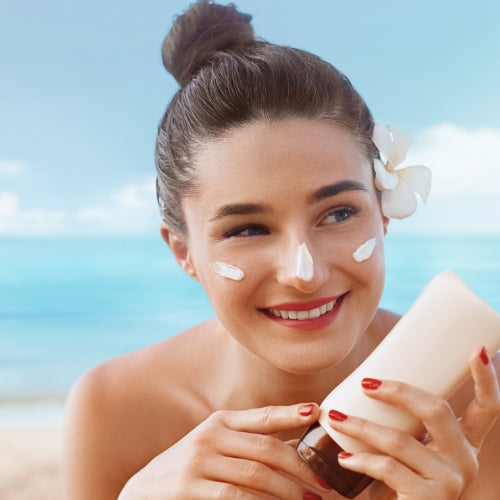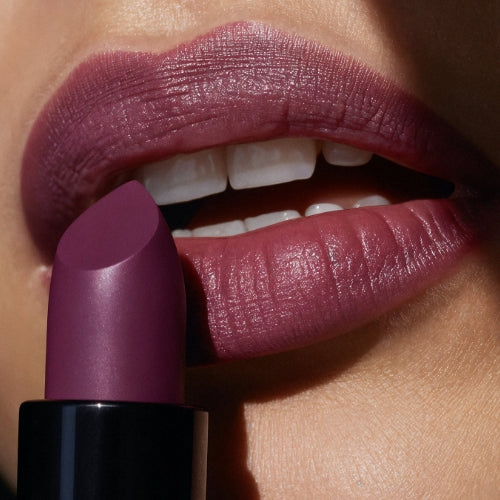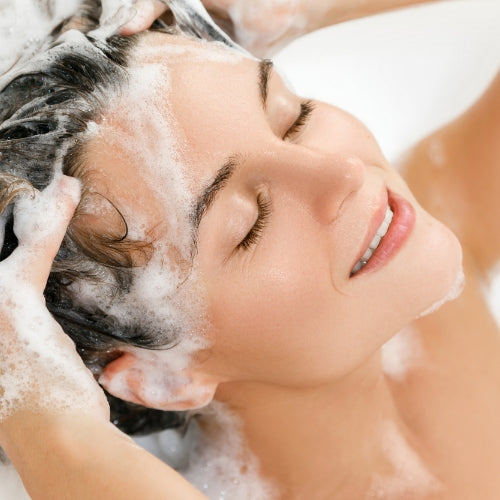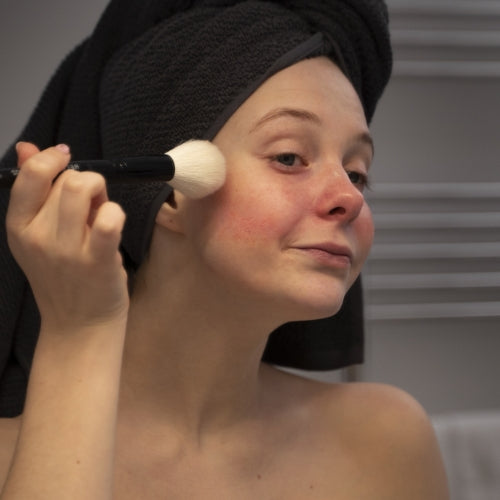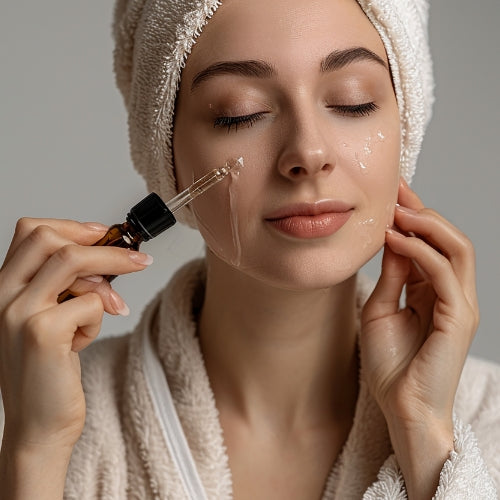
Winter Skincare Routine for Glowing, Healthy Skin in Pakistan
Those chilly mornings, the soft heaters at home, and that pleasant breeze, winter in many areas of Pakistan feels cozy and comforting, but your skin may tell a different story. Even when temperatures don't drop too much, lower humidity and indoor heating can quietly pull moisture from your skin. As a result, tightness, dullness, flaky patches, and sometimes small red spots or irritation may occur.
But the good news is that you don't need a complicated routine or expensive gadgets to fix it. A few smart changes in lifestyle and ideal skincare products will keep skin soft and healthy all season.
Below, we've shared a step-by-step guide for a winter skincare routine for glowing and healthy skin.
Table of Contents
- Step 1: Start with a Gentle, Hydrating Cleanser
- Step 2: Use a Hydrating Toner or Essence
- Step 3: Apply a Nourishing Serum
- Step 4: Moisturize Generously
- Step 5: Always Apply Sunscreen
- Don't Forget Body and Lips
- Building a Simple AM & PM Winter Routine (Sample Schedule)
- Common Mistakes to Avoid During Winter Skincare Routine
- Conclusion
- FAQs
Step 1: Start with a Gentle, Hydrating Cleanser
If your face feels tight or stretched after washing, your cleanser is likely too harsh for your skin in winter. Swap foaming, high-pH cleansers for cream-based or low-pH cleansers that can remove dirt and light makeup without stripping the skin's natural oils.
In addition to barrier-supporting components like ceramides, look for humectants like glycerin or hyaluronic acid. These can help the skin keep its moisture after you wash. The immediate benefit is that your skin gets less tightness, less flaking, and a cleaner look, so the rest of your routine works better. Lastly, always use lukewarm water and gently pat dry, and avoid rubbing.
Step 2: Use a Hydrating Toner or Essence
A hydrating toner or essence is not about alcohol or sting; it's about prepping skin. Think of it as the primer for your skincare, as it brings a quick layer of water to the surface and helps serums and creams absorb more effectively.
Good ingredients here include hyaluronic acid, which can pull water into the skin, and soothing extracts like heartleaf, for a calming effect. In winter, avoid toners with high alcohol and fragrance. While sc feels items can make you feel good for a short time, they can actually increase moisture loss.
Step 3: Apply a Nourishing Serum
Serums let you target specific skin concerns. In winter, opt for serums that can hydrate and repair your skin, consider niacinamide for barrier support and balanced skin tone, squalane for lightweight, long-lasting moisture, and vitamin C for brightness without dryness.
The benefit is that serums can be hydrating, help reduce dullness, and can also support the skin's repair processes, so moisturizers don't have to work as hard. If you're using an active ingredient like vitamin C, monitor for sensitivity and reduce the frequency if your skin feels irritated.
Step 4: Moisturize Generously
Moisturizer is the most important product of a winter skincare routine. In dry weather, creams that can restore lipids and form a light seal are more effective than gel textures. Look for ingredients like ceramides (they rebuild the barrier), dimethicone (which prevents water loss), and nourishing butters like shea for very dry spots.
Make sure to apply moisturizers within 30-60 seconds after cleansing or after your serum, while your skin is still slightly wet, so it keeps that moisture. For daytime, choose a non-greasy cream that layers perfectly under sunscreen; at night, opt for a thicker option to speed up repair.
For oily skin types, choose barrier-repairing lotions rather than heavy oils because the goal is to restore balance, not to add shine to your skin.
Step 5: Always Apply Sunscreen
Sunscreen isn't a seasonal product for summer, but a year-round option that shouldn't be ignored in winter. UV rays, especially UVA, can go deeper into the skin and damage the skin barrier, speeding moisture loss and contributing to pigmentation and aging.
Always make sure to use a broad-spectrum SPF 30–50 with hydrating properties (some sunscreens now contain hyaluronic acid or glycerin), and make it the final step of your morning routine.
The benefit is that you can prevent sun-driven dehydration and protect any improvements you've built into your skin with serums and moisturizers. If you wear makeup, pick a sunscreen that can sit comfortably under foundation, or choose a tinted SPF for an efficient one-step finish.
Don't Forget Body and Lips
It's easy to focus only on your face, and this is what the majority do, especially in winter, but your body and lips also need special care. Areas like the lips, elbows, knees, and hands have thinner skin, so they dry out faster. You might notice rough elbows, chapped lips, or hands that feel tight after washing; all are signs that your skin's protective oils are depleting.
That's why make sure to use a rich body cream or lotion right after showering, when the skin is slightly damp, to seal water inside. For lips, go for occlusive balms, those that can seal in moisture rather than just sit on top. And don't forget to use a hand cream throughout the day, especially after washing your hands. These small, consistent habits can prevent painful cracking, flaking, and irritation.
Building a Simple AM & PM Winter Routine (Sample Schedule)
Creating a winter skincare routine doesn't have to feel challenging. Here's a simple daily structure anyone can follow, as it takes under 10 minutes but keeps your skin nourished and protected:
AM Routine:
- Gentle cleanser
- Hydrating toner or essence
- Brightening or hydrating serum
- Moisturizer (creamy or barrier-repairing)
- Sunscreen (SPF 30-50)
PM Routine:
- Cleanser (mild and non-stripping)
- Toner or mist
- Serum or treatment (hydrating, repairing, or brightening)
- Rich moisturizer or sleeping cream
Common Mistakes to Avoid During Winter Skincare Routine
Certain habits may regress your progress, even if you're using the right products. To keep your skin barrier hydrated, stay clear of these typical blunders:
- Over-exfoliating: The skin barrier can be weakened by dryness, and strong acids or scrubs may worsen the damage
- Using hot water: It may feel comforting, but it strips away natural oils and worsens dehydration.
- Skipping moisturizer: Even oily skin needs hydration; dryness can trigger more oil production, not less.
- Trying too many new products at once: The skin barrier struggles to adjust; introduce one change at a time.
- Ignoring sunscreen: UV rays are active every day, not just when the sun feels strong.
Conclusion
Winter doesn't always have to make your skin dull, flaky, or irritated. When you understand what your skin needs, which is moisture and hydration, keeping it healthy becomes easy. By following a few simple steps each day and avoiding harsh habits, you can keep your skin comfortable and glowing even through the driest months.
FAQs
Q1: Why does my skin feel dry even though I use moisturizer?
Because your cream cannot hold onto moisture as quickly as dry air does.
Q2: Can oily skin get dry in winter?
Yes, oily skin can still lack water; that's called dehydration. Use lightweight, water-based hydrators rather than skipping moisturizer.
Q3: How often should I exfoliate in winter?
Once or twice a week is enough.
Q4: Do I really need sunscreen indoors?
If you sit near windows or use screens for long hours, then yes. UVA rays and blue light can still affect your skin barrier and tone.
Q5: What's the best quick tip for winter skincare?
Immediately after cleansing your face or taking a shower, apply a moisturizer to seal in moisture before it evaporates. That single step can dramatically reduce dryness.



